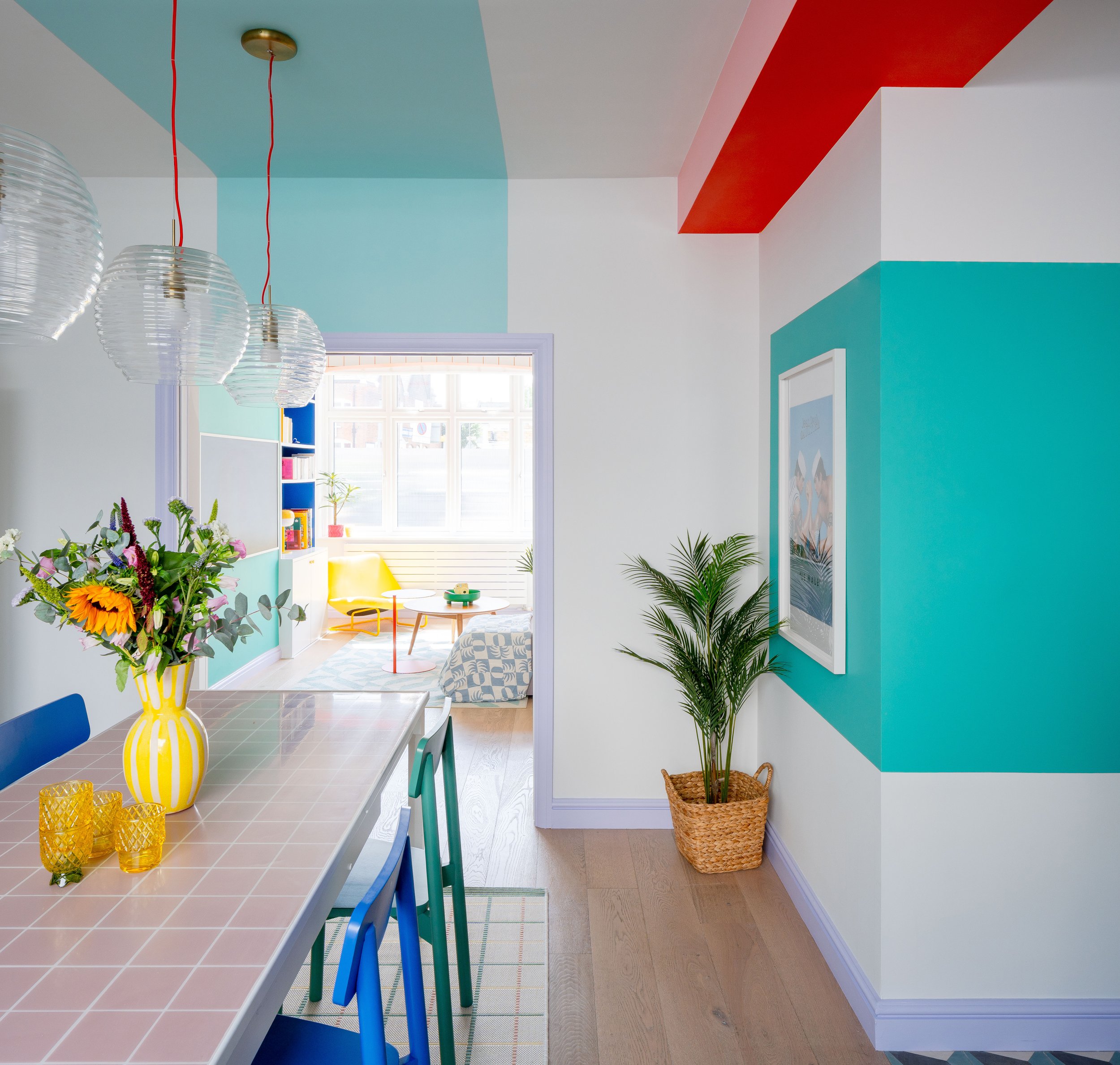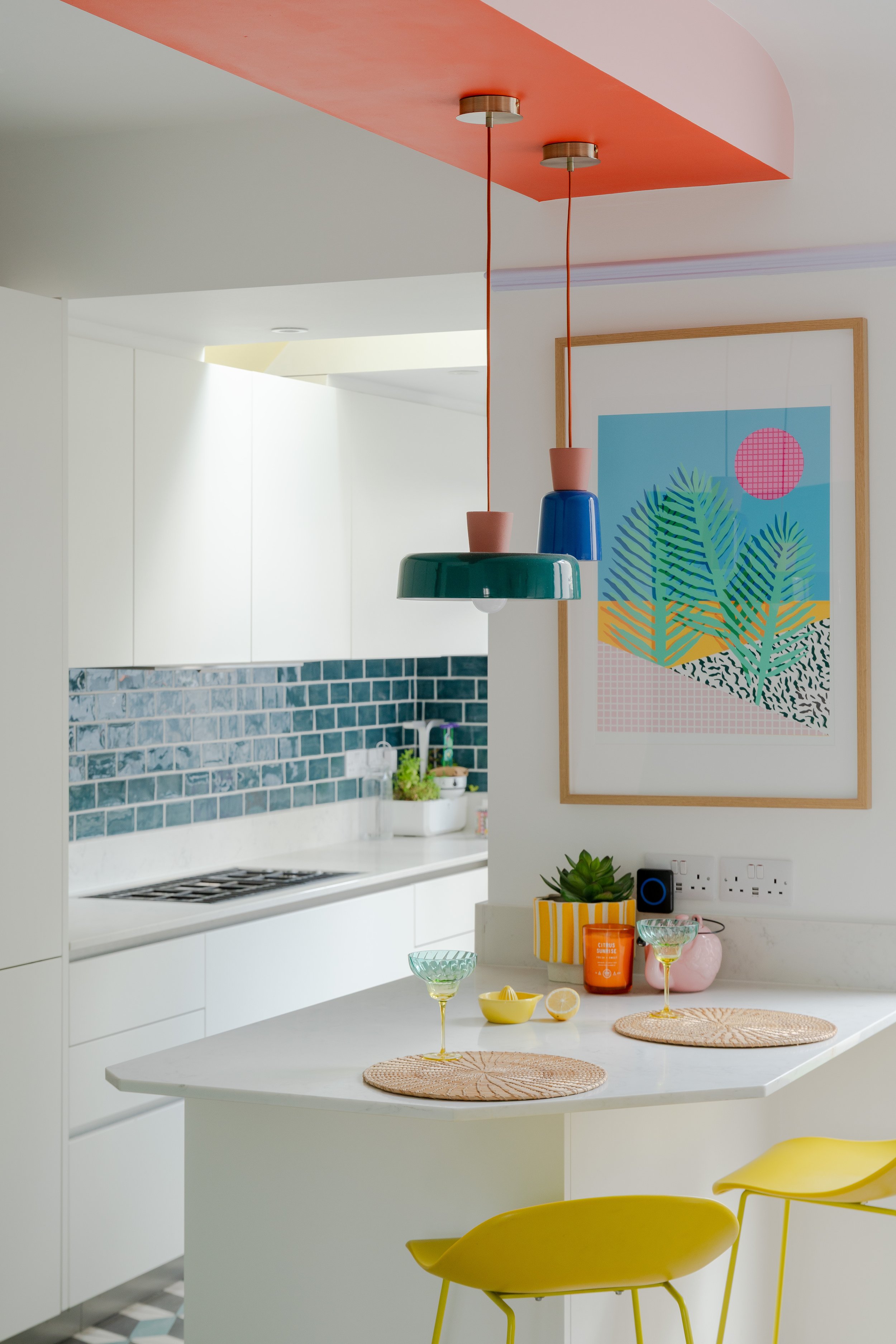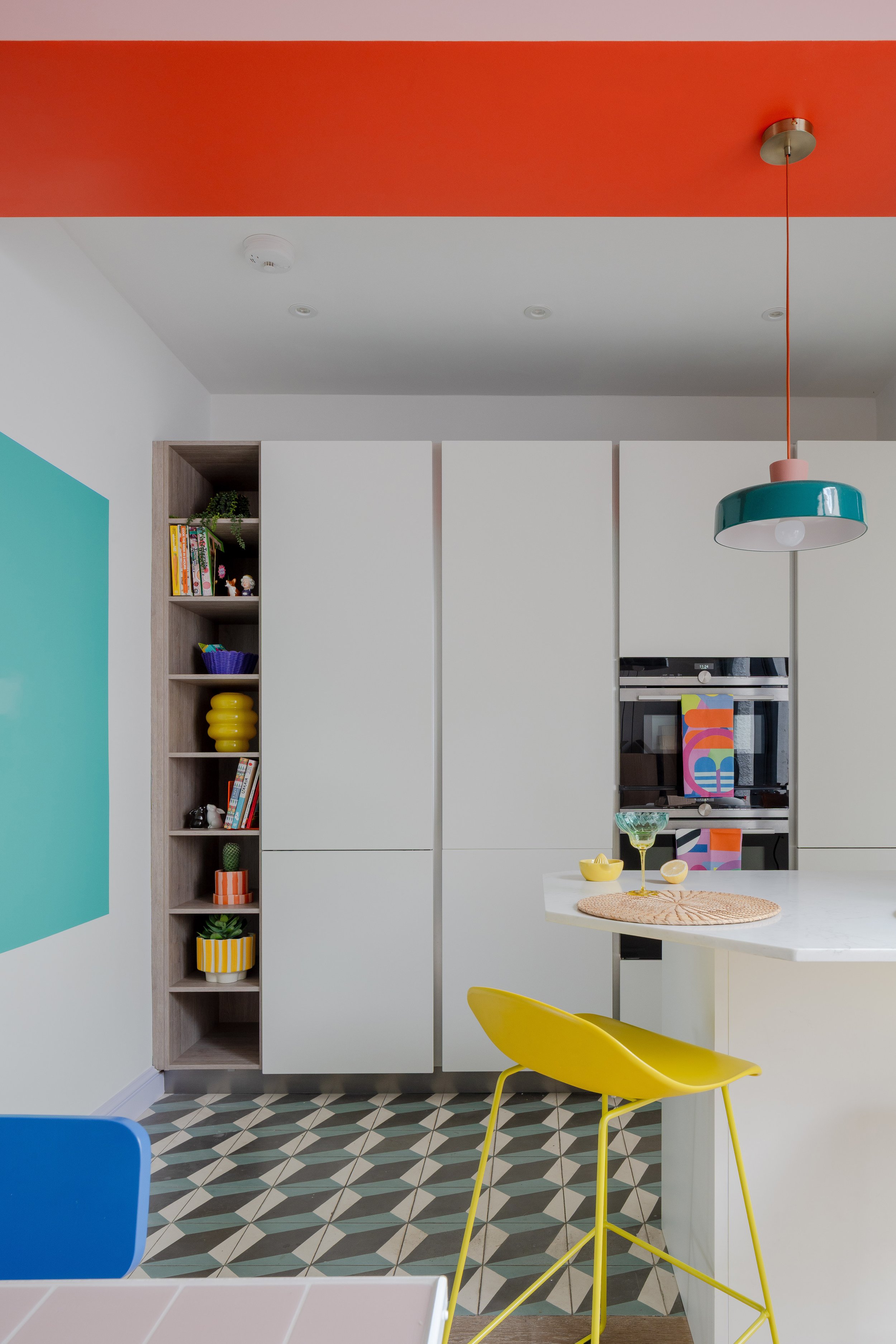Real Life vs. Styling for the Camera
Why both matter — and how to make your home photo-ready in minutes
Let’s be real: no one’s home looks like the glossy photos you see online all the time.
Mine doesn’t. Yours doesn’t. Even the most beautiful interiors you’ve saved on Pinterest? Yep — there’s probably a charging cable just out of frame, a pile of laundry in the hallway, and at least one sad plant they forgot to water.
And that’s the point.
Real life is meant to be lived in. But when it’s time to photograph a space — whether it’s for your own Instagram, a portfolio, a brand campaign, or just to remember a room you love — a little “shoot day magic” goes a long way.
🍋 The lemon that wouldn’t behave
Here’s what no one tells you about “perfect” interiors: sometimes they hinge on a single lemon.
I was styling a dining table for a shoot — everything was just so. Flowers fluffed, plates perfectly stacked, napkins tied in a way that said effortless (but took me three tries). And then… the lemon.
No matter where I put it, it threw the whole photo off balance. Too far left, and it looked like it was trying to escape the frame. Too far right, and it pulled the eye away from the main focal point. I nudged it a millimetre. And again. And again.
Fifteen minutes later, the lemon was finally in the right spot. The shot sang.
That’s the kind of micro-tweak that happens on shoot day. Not because I’m obsessed with fruit placement (though, fair enough, I might be), but because in a single still image, every element matters.
🪞 The truth about “perfect” interiors
Here’s the thing: real homes aren’t magazine spreads 24/7.
They can’t be — and they shouldn’t be.
Your everyday home is full of movement. There’s a coffee mug halfway to the dishwasher. A jumper on the back of the chair. The dog’s toy in the hallway. That’s life, and it’s beautiful in its own right.
But in a photo, all those little realities can muddy the story. A great image needs clarity — it should tell the viewer exactly where to look, and what to feel, within seconds.
That’s why, when we photograph a space, we strip away some of the noise and highlight the details that best capture its essence.
📸 So — when should you style for the camera?
When you’re listing your home or a holiday rental online
When you’re sharing a project in your creative portfolio
When you’re posting a room makeover you’re proud of
Or honestly… whenever you feel like it
Think of it as putting on your best outfit for a special event. You’re still you — just dialled up.
🎯 What happens on shoot day
On the morning of a shoot, the room might already look gorgeous. But the camera is a little… demanding.
Here’s what really goes down:
Declutter (strategically) — Not the whole room, just the parts the camera will see. The other side of the room? It might be a staging zone for extra cushions, plant pots, and props.
Prop play — A well-placed stack of books, a just-poured coffee, a throw with the right amount of crumple. Sometimes I style the space as if someone has just walked out of the frame — the tea is still steaming, the chair is still angled. It’s not just “pretty” — it’s lived-in and ready to be loved.
Micro-adjustments — Cushions fluffed so the corners point at the same angle. Curtains opened just enough to catch the light. Rugs shifted 3cm to pull the whole shot together (yes, I’ve done it).
Light checks — Overhead lights are often switched off (they can add unflattering yellow tones) and natural light is bounced around with mirrors, white card, or just clever positioning.
Test shots & tweaks — We take photos, adjust, take more photos. Sometimes a whole vignette is reworked if it’s not telling the right story.
It’s detail-driven, sometimes ridiculous, and always worth it — because a good image can make you feel a space before you even step into it.
📚 Why it’s not “faking it”
This is where people sometimes get uncomfortable:
“But isn’t that fake? My home doesn’t actually look like that every day.”
The answer: no, it’s not fake. It’s storytelling.
Think of it like dressing up for a special occasion. You’re still you — you’ve just chosen clothes and accessories that best express who you are in that moment.
When I style for the camera, I’m not just placing objects — I’m building a scene. I ask myself: How is the person living in this space using it?
Maybe they’ve just made coffee and stepped away for a moment. Maybe they’ve been curled up on the sofa with a book, or just finished baking something warm and messy.
That’s why I like to photograph spaces as if the occupant has just left the frame. The throw is slightly crumpled, the book is open, there’s steam rising from the mug. It feels lived in — because it is.
It’s not about pretending life looks perfect all the time. It’s about capturing a slice of life that invites the viewer in, so they can imagine themselves there.
🌿 The joy of both versions
One of my favourite projects involved a young family’s kitchen-diner. On shoot day, we cleared the breakfast bowls, polished the table, styled a vase of peonies, and lit the room with that soft golden afternoon light photographers dream of.
The photo was beautiful.
The next day? There were school bags by the door, half-eaten toast on the counter, and Lego on the floor. Also beautiful — just in a different way.
Both versions tell a truth. One says: Here’s the dream version of the space we created. The other says: Here’s how we live in it every day. And both are worth celebrating.
🌈 Tips: Make your home photo-ready in minutes
You don’t need a full styling team (hi 👋) to make your home look its best in photos. A few quick tweaks can transform the vibe instantly:
Clear the frame, not the room — You only need to tidy the area the camera will see. Off-frame clutter is allowed — encouraged, even.
Bring in life — Fresh flowers, a bowl of fruit, an open book, a lit candle… tiny props that say “this is lived in and loved.”
Think in layers — Mix textures (soft throws, shiny ceramics, matte paperbacks) to add depth to the shot.
Check your colour story — Too many competing tones? Pull a few out. Missing a pop? Add a cushion, book, or mug in a bold hue.
Use the magic triangle — In styling, objects grouped in threes are pleasing to the eye — especially in photos.
Light matters most — If possible, shoot in daylight with overhead lights off. Warm shadows and natural highlights will do most of the heavy lifting.
Style for the story — Ask yourself: what feeling do I want this image to give? Then choose props, colours, and angles that serve that feeling.
💛 How to love your “everyday” version too
While shoot day is fun, remember — your daily home doesn’t have to be Instagram-ready to be beautiful.
Here’s how to embrace the lived-in version:
Keep little joy triggers visible — a favourite mug, a plant you love, art that makes you smile.
Loosen the perfection grip — a bit of mess is proof of life, not failure.
Rotate mini-moments — every so often, restyle a corner or swap out a throw. Small refreshes can lift a space without an overhaul.
Design for feeling first — whether it’s cosy, energised, or playful, make sure your home gives you that vibe day-to-day, not just on camera.
Your home is not a set — it’s a backdrop to your life. The spills, the laughter, the slightly crooked cushion… those are part of its charm.
📥 Free checklist: Style like a pro
If you want to try the exact process I use before photographing a space, I’ve made my Shoot Day Styling Checklist available as a free download.
It’s short, visual, and works for any space — whether you’re photographing a room, a tablescape, or even a flatlay.
Download your free checklist here 👇
🌈 Want a home that’s both functional and photo-worthy?
That’s exactly what I do. Whether you’re looking for colourful interior design, bold photoshoot styling, or playful set design, I can help you create a space that feels incredible to live in and looks amazing in photos.
And if you’re more of a solo explorer — not ready to hire a designer but craving the tools and confidence to do it yourself — my online course Colour Your Home Happy will guide you through it step-by-step.
Because you deserve a home that makes you smile in real life and on camera.















